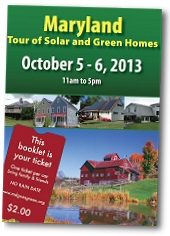 As
you select and prepare to carve a pumpkin this Halloween, you should
pause to reflect on the vast impact this humble gourd has had on our
cultural history.
As
you select and prepare to carve a pumpkin this Halloween, you should
pause to reflect on the vast impact this humble gourd has had on our
cultural history.Pumpkins generally trace their origins to Central America, and collections of seed have been found in Mexico dating back several thousand years. Today, pumpkins are grown on every continent except Antarctica, and have found their way into our legends and traditions, kitchens, kitschy competitions, and media.
In literature, we should remember poor Ichabod Crane, knocked for a loss by a pumpkin lobbed by the headless horseman of Washington Irving’s “Legend of Sleepy Hollow,” or even Cinderella’s enchanted carriage. Then, of course, there is the now classic book and television special “It’s the Great Pumpkin, Charlie Brown,” or the more edgy Pumpkin King, in Tim Burton’s “Nightmare Before Christmas,” to say nothing of the early 90’s band, Smashing Pumpkins.
Culinary uses range from traditional pumpkin pie filling and pumpkin butter, to protein-rich seeds, which can be roasted and salted. The meat of the pumpkin can also be boiled or fried, diced or pureed, and has found its way as a filling for sweet Italian ravioli, soups, and numerous vegetarian dishes. Some microbreweries even produce a seasonal pumpkin ale.
Lately, florists have gotten into the act and use pumpkins as containers to fill with autumn-themed flowers as centerpieces or gift baskets.
If these notions have you seeing orange, then keep in mind that pumpkins come in a host of colors, from the red “Rouge D’Etant” to varieties in gold, buff, greenish-blue, and blue. New cultivars named “Casper” or “Baby-Boo” offer white pumpkins, which might be particularly ghoulish when carved.
Another important variety includes the giant pumpkins, perfect for competitions. Gourd gardeners are now approaching the 1,500 pound barrier on individual specimens. The 1,000 pound mark was broken in 1996 with the variety “Atlantic Giant,” and within the past several years a 1,458 pound specimen made its way into the Guinness Book of Records. There are also articles about a man who grew more than 2,700 pounds of pumpkin on a single vine.
Another somewhat less-dignified competition includes the popular “pumpkin flings” held each year, such as the “World Championship Punkin Chunkin” in Delaware. Approximately 30,000 people gather to watch medieval style catapults, 100 foot-long cannons, and four-story tall slingshots shoot ten-pound pumpkins up to 4,000 feet through the air.
However, pumpkins no doubt have their greatest appeal when artfully carved and illuminated as Jack-o’-Lanterns for Halloween. And while this tradition is relatively new, especially in the New World, its origins extend back thousands of years into the misty past.
We begin with Celts celebrating the “Feast of Samhain” on November 1. The feast takes its name from the Gaelic Samhraidhreadh, meaning summer’s end, and is a celebration of the final harvest, which featured bonfires, food, dancing, and costumes. It is also an important mystical time, the start of a new year, when the transition between seasons opens a doorway into the realm of spirits.
Samhain is also identified as a godlike individual, sometimes defined as a “lord of the dead.” This mythic figure is depicted carrying a lantern or spectral fire, with which he guides lost and roaming spirits to the supernatural realm. His appearance is also associated with Will-o’-the-Wisp, or Welsh “Corpse Candles,” ghostly flames which move over bogs and through cemeteries.
The Feast of Samhain began its “conversion” to Halloween in 844, when Pope Gregory transferred the Christian feast for “All Saints” or “All Hallows” (meaning “holy”) from May 13 to November 1, to coincide with the Celtic “pagan” festival.
As centuries passed and traditions fused, the figure of Samhain guiding spirits with a spectral light was seemingly recast by Irish storytellers as a Christianized Jack-o’-Lantern. Incidentally, “jack” is no more than a term for any common man, and therefore Jack-o’-Lantern simply means “man with a lantern.”
The tragic legend of Jack holds that he was an inveterate prankster whose cunning ran afoul of the devil himself. Upon his death Jack finds that he is barred from heaven for never having performed an unselfish act, and similarly banned from hell. Doomed to a twilight existence between worlds, Jack carves a turnip and creates a lantern to guide his way, lighting it with an infernal ember coaxed from the devil.
The tradition of carving lanterns out of turnips and lighting them with embers or oil continued for centuries among Irish households. Moreover, like the medieval practice of carving gargoyles on cathedrals to scare off malevolent forces, the Irish carved ghastly visages into their turnips to ward off those evil spirits who roamed the countryside.
In time, of course, Irish immigrants brought their turnip carving to the new world, where they happily discovered a much larger gourd suitable for carving. And yet, one has to wonder what the ancient Celts and their Druid priests might have made of “punkin chunkin.” We will have to ask them when they show up again on the next Samhain.
Copyright 2013, Joseph M. Keyser














